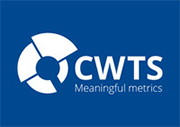MCM-41 Acid as a Sustainable Material from Waste Polystyrene
DOI:
https://doi.org/10.29356/jmcs.v69i1.2314Keywords:
MCM-41-PSSA, acid solid, sustainableAbstract
This study incorporated expanded polystyrene (PS) from waste packaging into the mesoporous material MCM-41 to obtain PS-MCM-41. Both materials were obtained at room temperature, assisted by the ultrasound technique, and functionalized with sulfonated polystyrene (PSSA, Polystyrene Sulfonic Acid) to obtain MCM-41-PSSA and PS-MCM-41-PSSA. The evolution of the pore structures of the synthesized materials was studied using XRD. The functionalized materials' pore size, specific area, and pore volume were reduced. In addition, the thermal stability of PS-modified MCM-41 was improved concerning the parent material. The NH3-TPD technique showed increased strong acid sites, with MCM-41-PSSA being the most acidic material. Incorporating waste material into a silicon-based mesoporous material and its functionalization with sulfonic groups allows the development of a sustainable heterogeneous material with potential applications in heterogeneous acid catalysis.
Resumen. En este estudio se incorporó poliestireno expandido (PS) proveniente de empaques de desecho al material mesoporoso MCM-41 para obtener PS-MCM-41. Ambos materiales fueron obtenidos a temperatura ambiente, asistidos por la técnica de ultrasonido, y funcionalizados con poliestireno sulfonado (PSSA, Polystyrene Sulfonic Acid) para obtener MCM-41-PSSA y PS-MCM-41-PSSA. La evolución de las estructuras porosas de los materiales sintetizados se estudió mediante DRX. Se redujo el tamaño de poro, el área específica y el volumen de poro de los materiales funcionalizados. Además, la estabilidad térmica del MCM-41 modificado con PS mejoró con respecto al material original. La técnica NH3-TPD mostró un aumento de los sitios ácidos fuertes, siendo el MCM-41-PSSA el material más ácido. La incorporación de material de desecho en un material mesoporoso basado en silicio y su funcionalización con grupos sulfónicos permite el desarrollo de un material heterogéneo sostenible con potenciales aplicaciones en catálisis ácida heterogénea.
In the present research work, the incorporation of waste polystyrene into a material based on mesoporous silica is proposed, as well as the sulfonation of this waste polymer to obtain MCM-41-PSSA with sulfonated polystyrene. The structural, chemical, and surface properties of the materials MCM-41 with polystyrene and MCM-41 with functionalized polystyrene were studied.
Downloads
References
Baena-González, J.; Santamaria-Echart, A.; Aguirre, J.L.; González, S. Waste Manage (Oxford). 2020, 118, 139-149 DOI: http://dx.doi.org/10.1016/J.WASMAN.2020.08.035. DOI: https://doi.org/10.1016/j.wasman.2020.08.035
Chae, Y.; An, Y. J. Sep. 01, 2018, Elsevier Ltd. DOI: http://dx.doi.org/10.1016/j.envpol.2018.05.008. DOI: https://doi.org/10.1016/j.envpol.2018.05.008
Compa, M.; Alomar C.; Wilcox, C.; Van Sebille, E.; Lebreton, L.; Hardesty, B. D.; Deudero, S. Sci Total Environ. 2019, 678, 188–196 DOI: http://dx.doi.org/10.1016/j.scitotenv.2019.04.355. DOI: https://doi.org/10.1016/j.scitotenv.2019.04.355
Brouwer, R.; Huang, Y.; Huizenga, T.; Frantzi, S.; Le, T.; Sandler, J.; Dijkstra, H.; Van Beukering, P.; Costa, E.; Garaventa, F.; Piazza, V. Ocean Coast. Manag. 2023, 238, 106555 DOI: http://dx.doi.org/10.1016/j.ocecoaman.2023.106555. DOI: https://doi.org/10.1016/j.ocecoaman.2023.106555
Di, J.; Reck, B. K.; Miatto, A.; Graedel, T. E. Resour. Conserv. Recycl. 2021, 167. DOI: http://dx.doi.org/10.1016/j.resconrec.2021.105440. DOI: https://doi.org/10.1016/j.resconrec.2021.105440
Godoy, V.; Blázquez, G.; Calero, M.; Quesada, L.; Martín-Lara, M. A. Environ. Pollut. 2019, 255. DOI: http://dx.doi.org/10.1016/j.envpol.2019.113363. DOI: https://doi.org/10.1016/j.envpol.2019.113363
Chen, M.; Zhou, S.; Wu, L.; Xie, S.; Chen, Y. Macromol. Chem. Phys. 2005, 206, 1896–1902. DOI: http://dx.doi.org/10.1002/macp.200500200. DOI: https://doi.org/10.1002/macp.200500200
Lin Hu, Y.; Rong, Q.; Chen, C.; Bing Liu, X., J. Saudi Chem. Soc. 2023, 27, 101588. DOI: http://dx.doi.org/10.1016/J.JSCS.2022.101588. DOI: https://doi.org/10.1016/j.jscs.2022.101588
Martínez-Edo, G.; Balmori, A.; Pontón, I.; Del Rio, A. M.; Sánchez-García, D. MDPI. 2018. DOI: http://dx.doi.org/10.3390/catal8120617. DOI: https://doi.org/10.3390/catal8120617
Alothman, Z. A. 2012. DOI: http://dx.doi.org/10.3390/ma5122874. DOI: https://doi.org/10.3390/ma5122874
Jabbari, A.; Mahdavi, H.; Nikoorazm, M.; Ghorbani-Choghamarani, A. Res. Chem. Intermed. 2015, 41, 5649–5663. DOI: http://dx.doi.org/10.1007/s11164-014-1690-x. DOI: https://doi.org/10.1007/s11164-014-1690-x
Chaudhary, G.; Gupta, N.; Singh, A. P. Polyhedron. 2021, 207, 115348. DOI: http://dx.doi.org/10.1016/J.POLY.2021.115348. DOI: https://doi.org/10.1016/j.poly.2021.115348
Siril, P. F.; Cross, H. E.; Brown, D.R. J. Mol. Catal A. Chem. 2008, 279, 63–68. DOI: http://dx.doi.org/10.1016/j.molcata.2007.10.001. DOI: https://doi.org/10.1016/j.molcata.2007.10.001
Siril, P. F.; Brown, D. R. J. Mol. Catal. A Chem. 2006, 252, 125–131. DOI: http://dx.doi.org/10.1016/j.molcata.2006.02.050. DOI: https://doi.org/10.1016/j.molcata.2006.02.050
Thirumalaikumar, M. Taylor and Francis Ltd. 2022. DOI: http://dx.doi.org/10.1080/00304948.2021.1979357. DOI: https://doi.org/10.1080/00304948.2021.1979357
Ferreira, C. E. S.; Santos-Vieira, I.; Gomes, C. R.; Balula, S. S.; Cunha-Silva, L. Polymers (Basel). 2024, 16. DOI: http://dx.doi.org/10.3390/polym16070968. DOI: https://doi.org/10.3390/polym16070968
Mandal, T.; Panu, K. J. Synth. Chem. 2024, 13–23. DOI: http://dx.doi.org/10.22034/JSC.2024.451160.1070.
Vetrivel, S.; Chen, C. T.; Kao, H. M. New J. Chem. 2010, 34, 2109–2112. DOI: http://dx.doi.org/10.1039/c0nj00379d. DOI: https://doi.org/10.1039/c0nj00379d
Salim, E.; Afrizal; Zilfadli, 2021, 6, 153–161. DOI: http://dx.doi.org/10.12962/j25493736.v6i2.1091. DOI: https://doi.org/10.12962/j25493736.v6i2.10916
Mokrzycki, J.; Fedyna, M.; Duraczyńska, D.; Marzec, M.; Panek, R.; Franus, W.; Bajda, T.; Karcz, R. Materials, Jan. 2024, 17, 653 DOI: http://dx.doi.org/10.3390/ma17030653. DOI: https://doi.org/10.3390/ma17030653
www.elsevier.nl/locate/micromeso, accessed in May 2024.
Cuesta Zapata, P. M.; Miranda, J. F.; Orellana, F.; Gonzo, E.; Bonini, N. A. Mater. Chem. Phys. 2022, 287. DOI: http://dx.doi.org/10.1016/j.matchemphys.2022.126232. DOI: https://doi.org/10.1016/j.matchemphys.2022.126232
Du, P. H.; Hieu, N. T.; To, T. C.; Bach, L. G.; Tinh, M. X.; Mau, T. X.; Quang, K. D. Adv. Mater. Sci. Eng. 2019, 2019. DOI: http://dx.doi.org/10.1155/2019/8573451. DOI: https://doi.org/10.1155/2019/8573451
Tian, Y.; Zhu, X.; Zhou, S.; Zhao, W.; Xu, Q.; Liu, X. J. Bioresour. Bioprod. 2023, 8, 198–213. DOI: http://dx.doi.org/10.1016/j.jobab.2023.01.003. DOI: https://doi.org/10.1016/j.jobab.2023.01.003
Niluroutu, N.; Shukla, A.; Dhavale, V. M.; Unni, S. M.; Bhat, S. D. Int. J. Hydrogen Energy. 2021, 46, 20640–20649. DOI: http://dx.doi.org/10.1016/j.ijhydene.2021.03.156. DOI: https://doi.org/10.1016/j.ijhydene.2021.03.156
Sakunpongpitiporn, P.; Phasuksom, K.; Paradee, N.; Sirivat, A. RSC Adv. 2019, 9, 6363–6378. DOI: http://dx.doi.org/10.1039/c8ra08801b. DOI: https://doi.org/10.1039/C8RA08801B
https://pubs.acs.org/sharingguidelines, accessed in May 2024.
Yang, C. C.; Chiu, S. J.; Kuo, S. C. Curr. Appl. Phys., Jan. 2011. DOI: http://dx.doi.org/10.1016/j.cap.2010.11.043. DOI: https://doi.org/10.1016/j.cap.2010.11.043
Tran, A. T. K.; Pham, T. T.; Nguyen, Q. H.; Hoang, N. T. T.; Bui, D. T.; Nguyen, M. T.; Nguyen, M. K.; Van Der Bruggen, B. J. Environ. Chem. Eng. 2020, 8. DOI: http://dx.doi.org/10.1016/j.jece.2020.104302. DOI: https://doi.org/10.1016/j.jece.2020.104302
Thommes, M.; Kaneko, K.; Neimark, A. V.; Oliver, J. P.; Rodriguez-Reinoso, F.; Rouquerol, J.; Sing, K. S. W. Pure Appl. Chem. 2015, 87, 1051–1069. DOI: http://dx.doi.org/10.1515/pac-2014-1117. DOI: https://doi.org/10.1515/pac-2014-1117
Nunes, C. D.; Valente, A. A.; Pillinger, M.; Fernandes, A. C.; Romão, C. C.; Rocha, J.; Gonçalves, I. S. J. Mater. Chem. 2002, 12, 1735–1742. DOI: http://dx.doi.org/10.1039/b109678h. DOI: https://doi.org/10.1039/b109678h
Adam, F.; Kueh, C. W. J. Taiwan Inst. Chem. Eng. 2014, 45, 713–723. DOI: http://dx.doi.org/10.1016/j.jtice.2013.07.008. DOI: https://doi.org/10.1016/j.jtice.2013.07.008
Olivares, Y.; Herrera, C.; Seguel, J.; Sepúlveda, C.; Parra, C.; Pecchi, G. Catalysts. 2023, 13. DOI: http://dx.doi.org/10.3390/catal13061024. DOI: https://doi.org/10.3390/catal13061024

Downloads
Published
Issue
Section
License
Copyright (c) 2024 Marco Jared Niño-Castellanos, Eduardo Terrés-Rojas, Deyanira Angeles-Beltrán

This work is licensed under a Creative Commons Attribution-NonCommercial 4.0 International License.
Authors who publish with this journal agree to the following terms:
- Authors retain copyright and grant the journal right of first publication with the work simultaneously licensed under a Creative Commons Attribution License that allows others to share the work with an acknowledgement of the work's authorship and initial publication in this journal.
- Authors are able to enter into separate, additional contractual arrangements for the non-exclusive distribution of the journal's published version of the work (e.g., post it to an institutional repository or publish it in a book), with an acknowledgement of its initial publication in this journal.









